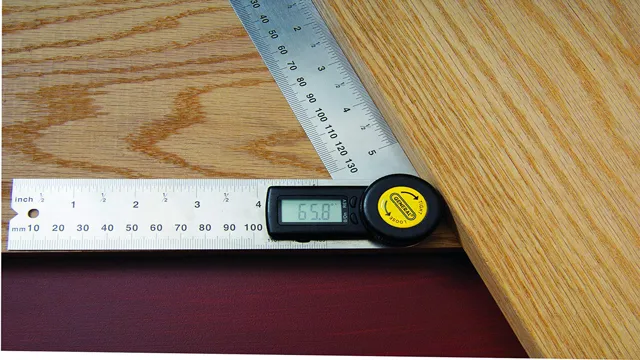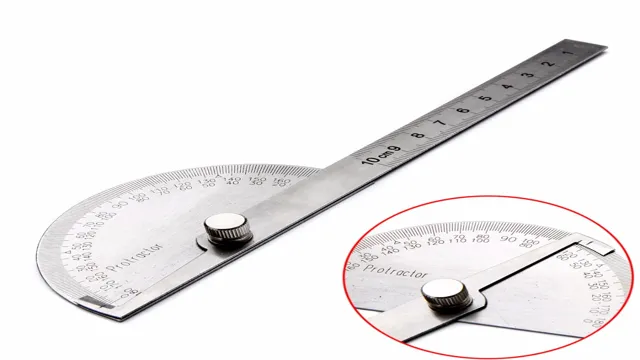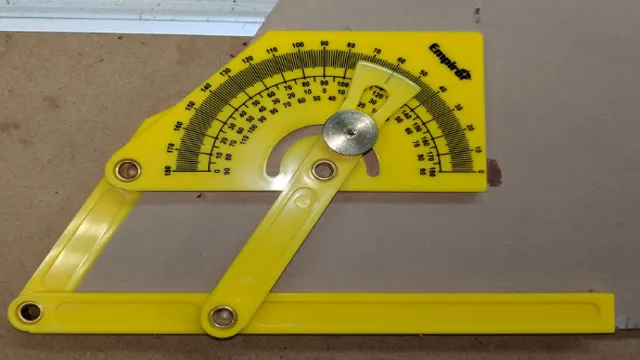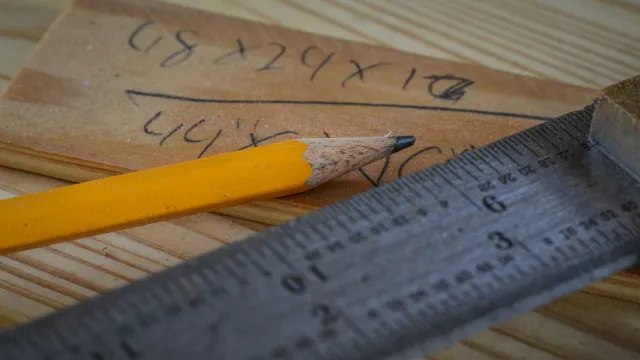How to Find an Angle Without an Angle Finder: Top Tricks and Hacks
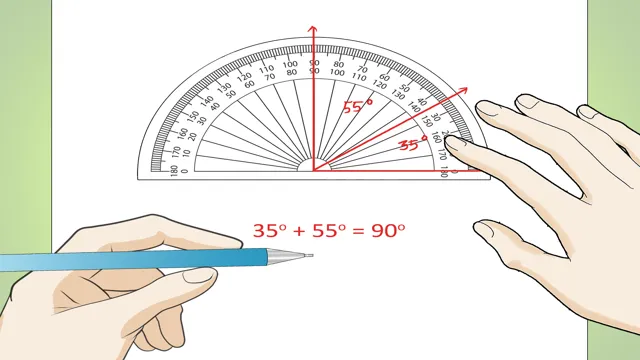
Angles are everywhere, from the sharp corners of a building to the soft curve of a smile. Understanding how to find them plays a fundamental role in fields such as architecture, engineering, and mathematics. However, not everyone has an angle finder lying around, or maybe you’re in a rush and need to measure angles on the fly.
Fear not, because there are a variety of methods and tricks to find angles without any fancy equipment. So put on your thinking cap, roll up your sleeves, and let’s dive into the world of finding angles without an angle finder.
Trigonometry Basics
Trigonometry can be a daunting subject for many people, but it doesn’t have to be. If you’re wondering how to find an angle without an angle finder, it’s actually quite simple. The most basic way is to use the concept of trigonometric ratios, such as sine, cosine, and tangent, which relate the sides of a right triangle to its angles.
By knowing any two sides of the triangle and the angle opposite the unknown side, you can use the appropriate ratio to find the missing angle. Another method is to draw the triangle to scale and measure the sides and angles using a ruler and protractor. This may require a bit more precision and accuracy, but it can be useful in some situations.
Ultimately, it all comes down to understanding the basic principles of trigonometry and practice with applying them. By mastering these skills, you can solve angle problems without relying on specialized tools or equipment.
Understanding Opposite, Adjacent, and Hypotenuse
Trigonometry Basics One of the fundamental concepts in trigonometry is understanding the terms opposite, adjacent, and hypotenuse. These terms refer to the relationship between the sides of a right-angled triangle. The hypotenuse is the side opposite the right angle and is the longest side.
The opposite side is the side directly opposite the angle of interest, while the adjacent side is the side adjacent to the angle of interest. When solving trigonometric problems, it is essential to understand these relationships, as they help us determine the values of angles and the lengths of sides. It is also important to remember that these terms are relative to the angle of interest.
For example, a side can be adjacent to one angle and opposite to another angle in the same triangle. Understanding these concepts is a crucial first step in mastering trigonometry and solving problems involving right-angled triangles. So, let’s get started and master the basics of trigonometry!
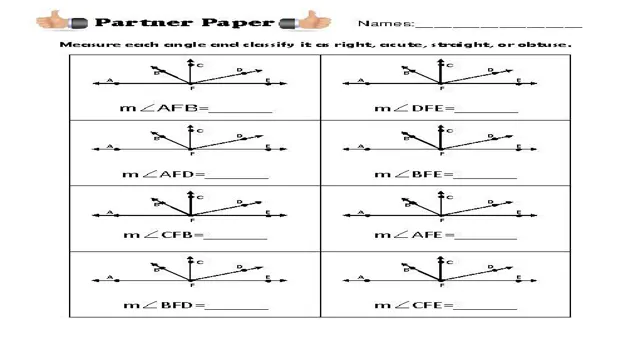
Sine, Cosine, and Tangent Functions
Trigonometry Basics Trigonometry is a branch of mathematics that deals with the study of triangles, particularly their angles and sides. One of the fundamental concepts in trigonometry is the sine, cosine, and tangent functions. These functions relate the angles and lengths of a triangle, and they are essential in solving many mathematical and engineering problems.
The sine function is defined as the ratio of the opposite side to the hypotenuse in a right triangle. It is denoted by sin(x), where x is the angle opposite the side. Similarly, the cosine function is defined as the ratio of the adjacent side to the hypotenuse.
It is denoted by cos(x), where x is the angle adjacent to the side. The tangent function is defined as the ratio of the opposite to the adjacent sides. It is denoted by tan(x).
These functions have many applications in real-life situations, such as engineering, navigation, and astronomy. They are also used in physics, chemistry, and other branches of science. For example, engineers use trigonometry to calculate the height of a building or the angle of a slope.
Similarly, navigators use trigonometry to calculate the position of a ship or an aircraft. In conclusion, trigonometry is a vital subject that plays a significant role in many fields of study. Understanding the sine, cosine, and tangent functions is crucial for solving complex problems, and it is something that one should be familiar with, especially if they are pursuing a career in mathematics, engineering, or science.
Using a Protractor
If you need to find an angle but don’t have an angle finder, don’t worry! A protractor is a handy tool that you can use to measure angles accurately and easily. To use a protractor, first, align the baseline of the protractor with one side of the angle you want to measure. Then, find the vertex of the angle on the protractor and put the center point of the protractor on it.
Look for the degree marking that aligns with the other side of the angle, and read the measurement. That’s it! With a little practice, you’ll be able to find angles quickly and accurately without needing any expensive tools. So, next time you need to measure an angle, grab a protractor and give it a try!
Drawing the Angle on Paper
Protractor If you need to draw an angle accurately on paper, using a protractor is the way to go. To begin, place the protractor on the paper where you want to draw the angle. Make sure the baseline of the protractor is lined up with one of the sides of the angle.
Then, find the vertex (the point where the two lines intersect), and move the protractor until the zero line is aligned with one of the sides of the angle that emanate from the vertex. Now, read the degrees on the protractor where the other side of the angle meets the curved edge of the protractor. That will give you the exact measure of the angle you want to draw.
You can use a ruler or a straight edge to draw the other side of the angle, which completes the angle. With a little practice, using a protractor to draw precise angles on paper is easy and worthwhile.
Measuring the Angle with a Protractor
If you’re trying to measure the angle of any object, a protractor can help you do it accurately. Using a protractor is relatively easy, even if you’ve never done it before. First, line up the flat side of the protractor with one of the sides of the angle, ensuring that the base line of the protractor is aligned with that same side.
Then, read the degree markings on the curved side. The degree markings start from zero at the left side and continue up to 180 at the right side. You can use the lines between the numbers to help position the protractor accurately.
Once you’ve got it lined up right, the angle is simply the number on the protractor’s scale where the other line falls. With a little practice, you’ll be able to measure angles like a pro!
Estimating Angles
Have you ever needed to find an angle but didn’t have an angle finder? Luckily, there are a few tricks to estimate the angle without any specialized tools. One way is to use a protractor to measure the distance between two points on the angled edge and then use the protractor’s readings to determine the angle. Another trick is to use a piece of paper to create an angle template.
Fold the paper at the desired angle, then unfold it to create a straightedge template that can be used to measure other angles. Additionally, you can use the Pythagorean Theorem to find an angle in a right triangle. Simply divide the length of the opposite side by the length of the adjacent side, and then use an inverse trigonometric function to find the angle.
By using these simple methods, anyone can estimate an angle without an angle finder, making it easier to complete projects with precision.
Identifying 90, 45, and 30 Degree Angles
Angle estimation can be a tricky task, especially when it comes to identifying 90, 45, and 30 degrees angles. These angles are commonly used in construction, engineering, and woodworking projects to ensure precision. To estimate a 90-degree angle, picture a perfect square in your mind.
The corners of the square form 90-degree angles. Similarly, to visualize a 45-degree angle, imagine a right-angled triangle. The angle opposite to the hypotenuse is the 45-degree angle.
Lastly, to estimate a 30-degree angle, draw an equilateral triangle. The angles of an equilateral triangle are 60 degrees, and thus, the base angles are 30 degrees. With these visualizations, you can easily identify these angles, even in situations where you don’t have measuring tools nearby.
Remember, practice makes permanent, so keep practicing and enhancing your angle estimation skills.
Visual Estimation Techniques
Estimating angles can be challenging without using a measuring tool. However, there are visual estimation techniques that can aid in determining angles. One technique is to picture the angle in your mind as a clock face.
For example, if the angle is at 45 degrees, imagine it as the minute hand pointing to 9 on the clock face. This technique can be helpful in estimating angles that fall within 90 degrees. Another technique is to use your fingers as a guide.
Hold your fingers parallel to each other and adjust the angle until they align with the direction of the angle being measured. Count the number of fingers that fit within the angle. This can help estimate larger angles beyond 90 degrees.
Overall, these visual estimation techniques can aid in determining angles without the need for a measuring tool.
Alternative Tools for Finding Angles
If you’re someone that works with wood or metal, you know the importance of finding angles with precision. An angle finder can definitely make your life easier, but what if you don’t have one on hand? Don’t worry, there are plenty of alternative tools you can use to get the job done. One is using a protractor, which is a measuring tool specifically designed to measure angles.
Another option is using a bevel gauge, which has a swiveling blade that can be set to an angle and then transferred to your project. You can also use a combination square, which can help you find angles and make accurate cuts. In a pinch, you can even use a smartphone app that turns your phone into an angle finder.
So if you don’t have an angle finder, don’t let that stop you from getting the job done. There are plenty of other tools you can use to find those angles with precision.
Using a Level
A level is a handy tool to have when you need to find a straight horizontal line for your project. However, finding angles can be a bit trickier without the right tools. Luckily, there are alternative tools you can use to find angles without a level.
One such tool is a protractor, which measures angles accurately up to 180 degrees. All you need to do is place the protractor on the edge of the object, line up the zero-degree mark with the starting point of the angle, and read off the degree measurement where the second line intersects with the protractor scale. Another tool you could use to find angles is a digital inclinometer.
This device works much like a level but can also measure angles with its built-in inclinometer. Plus, it gives a more precise reading than a protractor. Overall, there are various ways to find angles without a level, depending on your needs and preferences.
Using a String and Weight
If you’re exploring alternative tools for finding angles, using a string and weight may be a useful and straightforward method. Simply tie a string to a weight, such as a rock, and hold the string at the point where you want to measure the angle. Next, pull the string taut and use a protractor or angle finder to measure the angle between the string and the flat surface.
This method works best for larger angles and is often used in construction and engineering fields. While it may not be as precise as using specialized tools, using a string and weight can be quick, convenient, and effective for rough measurements. Try it out and see how it works for you!
Creating a Sector
Creating a sector can be an overwhelming task, especially when trying to find the perfect angles. Fortunately, there are alternative tools to simplify this process. One such option is using a protractor or angle finder tool, which allows you to easily measure angles with precision.
Another helpful tool is a digital angle gauge, which provides a digital reading of the angle for greater accuracy. Additionally, you can use a compass to draw circles and arcs, which can help with creating angles. It’s essential to have these tools on hand when creating a sector to ensure accuracy and precision.
By using these alternative tools, you can simplify the process of finding angles and creating a perfect sector.
Conclusion
In conclusion, finding an angle without an angle finder might seem like an impossible task, but it’s not! All you need is a bit of creativity, some basic tools, and a little bit of math. From creating a makeshift protractor with paper and a pencil to using the Pythagorean theorem and trigonometric functions, there are many ways you can calculate an angle without the aid of a specialized tool. So put on your thinking cap and get ready to impress your friends with your newfound ability to find angles like a pro!”
FAQs
What is an angle finder and how does it work?
An angle finder is a tool used to measure angles accurately. It works by using a protractor or a digital sensor to determine the angle between two surfaces.
Can I find an angle without an angle finder?
Yes, you can find an angle without an angle finder using various methods such as using a protractor, a level, or even a smartphone app.
What is the most accurate way to find an angle without an angle finder?
The most accurate way to find an angle without an angle finder is by using a protractor or a digital angle gauge. These tools provide precise measurements and can help you get the correct angle.
How do I use a protractor to find an angle without an angle finder?
To use a protractor, place it on the angle you want to measure, align the baseline with one of the edges of the angle, and read the angle measure indicated on the protractor scale.
Are there any smartphone apps that can help me find an angle without an angle finder?
Yes, there are many smartphone apps that can help you find an angle without an angle finder. Some popular ones include Angle Meter, Smart Protractor, and Clinometer.
Can I use a level to find an angle without an angle finder?
Yes, you can use a level to find an angle without an angle finder by placing it on one of the surfaces involved in the angle and adjusting it until it reads level. You can then use a protractor to determine the angle.
Is it possible to estimate an angle without an angle finder?
Yes, it’s possible to estimate an angle without an angle finder by using visual cues. For example, you can compare the angle to common angles (such as 90 degrees or 45 degrees) and estimate the angle based on that.

